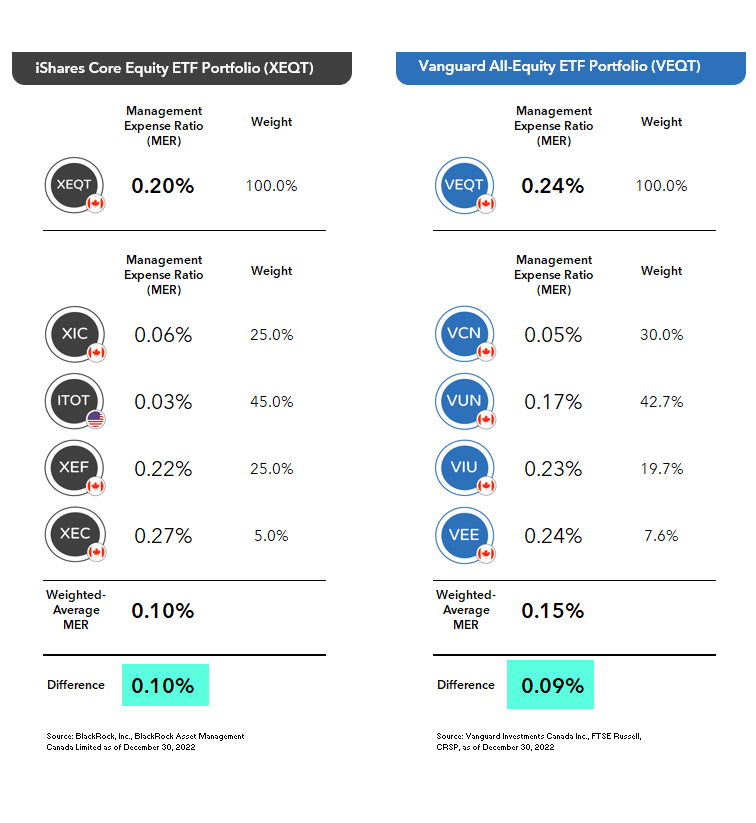It’s fun to look back and see how things change…or not. :)
Fans of this site, including many long-time readers and investors who enjoy this site, continue to tout the benefits of low-cost investing to others … I do too … but I still don’t invest in any Canadian Dividend ETFs.
That’s because when it comes to investing I believe you often get what you don’t pay for.
One way to reduce your investment fees, is to own lower-cost dividend ETFs but that doesn’t mean such funds are automatically suited for you and your approach.
In this updated post, I remind readers why I like some low-cost ETFs, why I own a few in my portfolio but when it comes to investing in Canada I’ve decided to build my own ETF per se.
I wrote about this in 2011. Yup, that long ago. I updated that post in 2017. And, it’s now 2023.
Learn how things change or what stays the same in this updated post and share your own story or comment about stocks or ETFs held for many years in a comment on the site. I read every comment and I try to answer every one of them as well.
Read on: Why I (still) don’t invest in Canadian Dividend ETFs.
Why I don’t invest in Canadian Dividend ETFs
Fans of this site, including many long-time readers and investors who enjoy this site, continue to tout the benefits of low-cost investing to others…but I still don’t invest in any Canadian Dividend ETFs.
That’s because when it comes to investing I believe you often get what you don’t pay for.
One way to reduce your investment fees, is to own lower-cost dividend ETFs.
In fact, here are some of the great benefits that come from investing in dividend ETFs beyond just ETF distribution income:
- Transparency – within a few taps of my phone I can see what every single holding is in these funds. I can also read up on the fund’s prospectus to learn how fund turnover is managed and how often. Portfolio turnover within the fund costs money – someone needs to get paid! That brings me to my next point below.
- Modest fees – you might recall, active fund management costs more because money managers are paid to perform. A pay for performance mandate encourages the mutual fund money manager to buy and sell stocks frequently in an attempt to beat the market or the index they are tracking. Fund management, buying and selling, incurs time and resources. Time is money. Those costs are passed on to you. Instead of this model, I think investors should strive to invest in a low-cost ETF that follows a reputable, established, broad market index such as the S&P/TSX Composite Total Return Index or for dividend investors in Canada, an established dividend-oriented index such as:
- S&P/TSX 60 Index (my favourite – see low-cost ETF from iShares XIU), or
- S&P/TSX Composite High Dividend Index, or
- FTSE Canada High Dividend Yield Index.
- Lower effort – if you’re going to invest in some individual stocks, you need to spend some time understanding these companies and understanding what you own, why you own it. I read a few annual reports every year and follow metrics like yield, payout ratio, earnings per share, cash flow to name a few. Dividend ETFs don’t have this complexity – they bundle all these companies together for you.
There are certainly many benefits to owning Canadian dividend ETFs…but I still don’t invest in any of these Canadian funds.
Read on in this updated post…
Why I don’t invest in Canadian Dividend ETFs
Here are my reasons why:
1. I built my own Canadian Dividend ETF.
Many years ago, I learned there is merit to owning the same Canadian stocks the big funds own – so I started that process. I’ve never looked back.
In 2011 and updated again in 2017, I went so far as to say Canadian dividend stock selection could be made easy.
Here is one quick example – look at this RBC Canadian Dividend Fund in 2011:

And now the same fund’s top fund holdings as of April 2017:

And what does the RBC Canadian Dividend Fund own in 2023?

Lots of differences eh? (Images courtesy of RBC’s site.)
Source: https://www.rbcgam.com/en/ca/products/mutual-funds/RBF266/detail
Let’s look at another example and pick on one of my favourite ETFs: XIU.
Now, again, if you don’t want to buy and hold certain stocks, nor try and create your own Canadian Dividend ETF like I have, then no problem. This fund is arguably one of the best ETFs to own in Canada.
(I recall iShares XIU was one of the world’s first ETFs.)
XIU holds the largest of the largest Canadian companies. My perspective is, if collectively the largest 60 companies in Canada aren’t making money year-over-year, nobody is.
This ETF has provided strong Canadian market returns over the last decade and remains a great choice for your indexed portfolio should you decide to go that route.
Here are the top holdings from XIU, from April 2017:

And as of April 2019:

And what does low-cost XIU in 2023?

Images courtesy of BlackRock’s site.
Humm, not too many changes. Something to consider…
2. I control the portfolio turnover (which is largely non-existent)!
I can count on my hands how many stocks I’ve bought then sold over the last 15 years. Yes, full disclosure, I have sold a few stocks over the years. I believe that comes with the DIY investor territory.
However, for the most part, instead of buying and selling any stocks including Beat the TSX stocks, I buy and hold and reinvest dividends for higher income over time.
You can see how that (boring) approach is working out for me below. Continue Reading…










